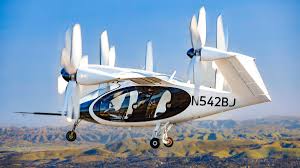
Breaking News
 James O'Keefe: My entire speech at AmericaFest 2025. We're not stopping. Join us to expose..
James O'Keefe: My entire speech at AmericaFest 2025. We're not stopping. Join us to expose..
 U.S. vs. Chinese Military Comparison – Focus on Asia-Taiwan Scenario
U.S. vs. Chinese Military Comparison – Focus on Asia-Taiwan Scenario
 DoJ Sues Four More States for Failing To Produce Voter-roll Data
DoJ Sues Four More States for Failing To Produce Voter-roll Data
 World's Largest Aviation Giant Abandons Google Over Security Concerns
World's Largest Aviation Giant Abandons Google Over Security Concerns
Top Tech News
 Perfect Aircrete, Kitchen Ingredients.
Perfect Aircrete, Kitchen Ingredients.
 Futuristic pixel-raising display lets you feel what's onscreen
Futuristic pixel-raising display lets you feel what's onscreen
 Cutting-Edge Facility Generates Pure Water and Hydrogen Fuel from Seawater for Mere Pennies
Cutting-Edge Facility Generates Pure Water and Hydrogen Fuel from Seawater for Mere Pennies
 This tiny dev board is packed with features for ambitious makers
This tiny dev board is packed with features for ambitious makers
 Scientists Discover Gel to Regrow Tooth Enamel
Scientists Discover Gel to Regrow Tooth Enamel
 Vitamin C and Dandelion Root Killing Cancer Cells -- as Former CDC Director Calls for COVID-19...
Vitamin C and Dandelion Root Killing Cancer Cells -- as Former CDC Director Calls for COVID-19...
 Galactic Brain: US firm plans space-based data centers, power grid to challenge China
Galactic Brain: US firm plans space-based data centers, power grid to challenge China
 A microbial cleanup for glyphosate just earned a patent. Here's why that matters
A microbial cleanup for glyphosate just earned a patent. Here's why that matters
 Japan Breaks Internet Speed Record with 5 Million Times Faster Data Transfer
Japan Breaks Internet Speed Record with 5 Million Times Faster Data Transfer
Joby S4 makes historic piloted tilt-rotor eVTOL transition flight

The race to place the first passenger-carrying eVTOL into regular taxi service has been a mixed bag in recent years. On the one hand, the technology has been maturing, but on the other companies once thought to be front runners are falling by the wayside as backers become impatient after pouring hundreds of millions of dollars into projects with no visible return on their investment.
One ray of optimism is Joby's S4 prototype, which now looks to be on the road to FAA certification. The all-electric, six-rotor eVTOL aircraft that takes off and lands like a helicopter and flies forward like a fixed-wing aircraft has been under development by the California-based aerospace company since it was founded in 2009. With a top speed of 174 knots (200 mph, 322 km/h), a range of up to 130 nautical miles (150 miles, 241 km), and an operational ceiling of 15,000 ft (5,000 m), the prototype has been making uncrewed test flights since 2017, clocking up 40,000 miles (64,000 km) in the air.
Last Tuesday this was topped when Joby Chief Test Pilot James "Buddy" Denham took the controls of the S4 at Joby's flight test facility in Marina, California and flew it from vertical takeoff to horizontal flight to vertical landing.
This is not the first time that an eVTOL has made such a transition flight with a pilot aboard, but the others by the likes of Beta Technologies and Wick Aero used aircraft with separate horizontal and vertical flight systems, while the S4 used a tilt-rotor system for both maneuvers.
Already under evaluation by the US Air Force, the S4 is now seeking FAA approval with an eye toward beginning commercial operations in Dubai later this year. Since the April 22 flight, the aircraft has made multiple tests with three different pilots at the controls.
"Achieving this milestone is hugely significant for Joby," said Didier Papadopolous, President of Aircraft OEM at Joby. "It not only demonstrates the high level of confidence we have in the performance of the aircraft as we prepare for commercial service in Dubai, it also paves the way to starting TIA flight testing with FAA pilots onboard.
"We have taken a very methodical approach to achieving this long-planned milestone, with an immense amount of testing, both in the air and on the ground, helping form a solid foundation that allowed us to move from one historic flight to routine pilot-on-board transitions almost overnight."

 Advanced Propulsion Resources Part 1 of 2
Advanced Propulsion Resources Part 1 of 2

